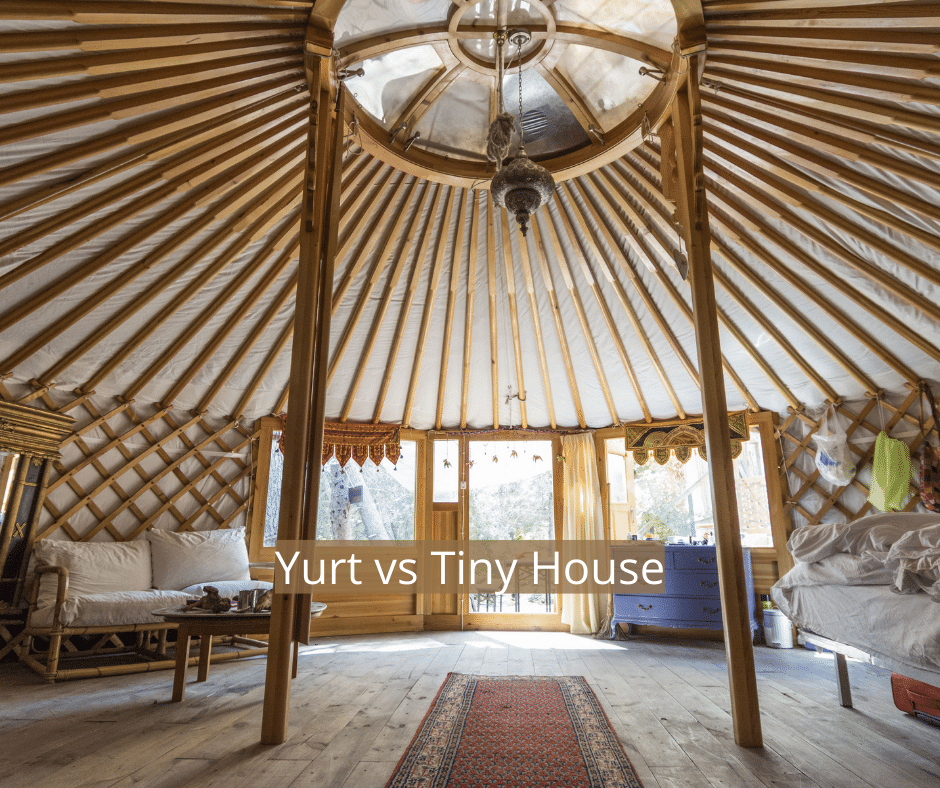Beginners Guides
How To Build A Tiny House For Free
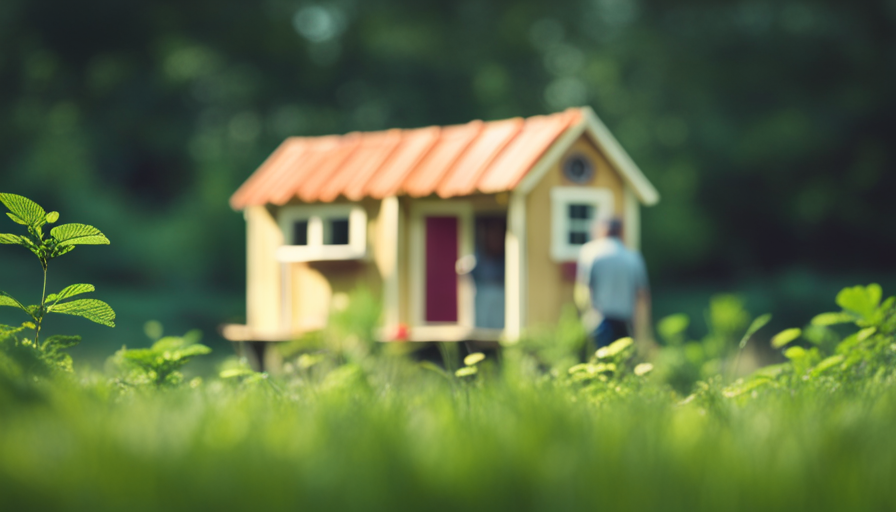
In the big, wide world of owning a home, sometimes making that dream house seems as hard as catching a cloud. Yet, there’s a secret spot full of hope. It’s where clever ideas shake hands with being smart with what you’ve got, turning the simplest stuff into a cozy, green retreat.
Welcome to the world of tiny house construction, where the power of imagination and ingenuity reign supreme.
Just as a desert traveler relies on their survival skills to build a shelter using only what nature provides, so too can we harness the resources around us to construct our own tiny abode – and best of all, for free. By tapping into the vast network of discarded materials, community support, and our own DIY spirit, we can embark on a journey towards affordable, eco-friendly living.
In this article, I will guide you through the steps of building a tiny house for free, from finding the right materials to incorporating sustainable energy sources. So let’s dive in and discover the secrets of this enchanting world, where the possibilities are as vast as the desert sky.
Key Takeaways
- Free building materials can be found online and at local construction sites and salvage yards.
- Repurposing and recycling items can save money and reduce waste.
- Community resources and workshops offer knowledge, tools, and materials for building a tiny house.
- Consider alternative energy sources like solar power and wind energy to reduce reliance on traditional power grids.
Find Free Building Materials
Now it’s time to hunt down some free materials to bring your tiny house dreams to life! Finding free building materials is essential when you’re on a tight budget.
One great way to acquire these materials is to repurpose and recycle items. Start by checking online platforms like Craigslist or Freecycle, where people often give away unused construction materials.
You can also visit local construction sites and ask if they have any leftover materials they’re willing to part with. Another option is to explore your community for salvage yards or recycling centers that offer free or low-cost building materials. These places often have a variety of items such as doors, windows, lumber, and even insulation that can be repurposed for your tiny house.
Be sure to inspect the materials carefully to ensure they are in good condition and suitable for your project. Remember, one person’s trash can be another person’s treasure! By utilizing recycled and repurposed items, you not only save money but also contribute to reducing waste and preserving the environment.
Now, let’s delve into how to make the most of these materials in the subsequent section.
Utilize Recycled and Repurposed Items
Using your creativity and a touch of resourcefulness, transform forgotten treasures into the heartwarming pieces that’ll bring your dream sanctuary to life. Repurposing creativity is the key to building a tiny house for free.
One great way to find materials is by exploring thrift stores. These stores are a treasure trove of hidden gems just waiting to be repurposed. Look for items like old doors, windows, and furniture that can be transformed into functional and stylish elements for your tiny house. With a little bit of imagination and some DIY skills, you can turn these thrift store treasures into unique pieces that add character to your tiny house.
Another way to utilize recycled and repurposed items is by salvaging materials from construction sites or demolition projects. Many times, construction crews are happy to give away or sell materials they no longer need, saving them from going to waste. You can find everything from lumber and bricks to plumbing fixtures and lighting fixtures. By repurposing these materials, not only are you saving money, but you’re also reducing waste and giving new life to items that would’ve otherwise ended up in a landfill.
Incorporating repurposed materials into your tiny house not only adds charm and character but also helps to reduce the overall cost of your project. By thinking outside the box and getting creative with your resources, you can build a beautiful and sustainable tiny house without breaking the bank.
So, let’s move on to the next step and take advantage of community resources and workshops to further enhance your project.
Take Advantage of Community Resources and Workshops
Explore the incredible opportunities offered by community resources and workshops to maximize your creativity and save money on your dream sanctuary. By taking advantage of community collaborations and local government support, you can gain access to a wealth of knowledge, tools, and materials that will help you build your tiny house for free.
One way to tap into community resources is by joining local workshops and classes focused on tiny house construction. These workshops are often hosted by experienced builders and enthusiasts who are passionate about sharing their knowledge. You can learn valuable skills such as framing, plumbing, electrical work, and insulation installation. Additionally, these workshops provide a platform for networking and connecting with like-minded individuals who can offer guidance and support throughout your tiny house journey.
Another avenue to explore is community collaborations. Many cities and towns have initiatives that promote sustainable living and affordable housing solutions, including tiny houses. These programs often provide grants, subsidies, or access to discounted or free materials for those interested in building a tiny house. By partnering with these programs, you can significantly reduce the cost of your project while contributing to the community’s goals.
Transitioning into the subsequent section about learning basic carpentry skills, these community resources and workshops are an excellent starting point for acquiring the necessary knowledge and expertise to tackle the construction of your tiny house.
Learn Basic Carpentry Skills
Take advantage of local workshops and classes focused on carpentry to gain the skills you need to turn your dream of a cozy retreat into a reality, just like a rough piece of wood can be transformed into a beautifully crafted piece of furniture with the right tools and knowledge.
These workshops provide a great opportunity to learn woodworking techniques and master carpentry skills, which are essential for building your own tiny house.
In these workshops, you’ll learn the basics of carpentry, such as how to use and maintain tools, measure and cut materials accurately, and assemble structures safely and securely. You’ll also learn about different types of wood and their characteristics, as well as various joinery techniques that’ll enable you to create strong and durable connections between the different components of your tiny house.
By participating in these workshops, you’ll not only acquire the necessary skills but also gain confidence in your ability to build a tiny house from scratch. The knowledge and experience you gain will empower you to make informed decisions when it comes to the design and construction of your tiny house.
With your newfound carpentry skills, you’ll be ready to move on to the next step: planning and designing your tiny house layout.
Plan and Design Your Tiny House Layout
Once you’ve honed your carpentry skills, envision the layout of your cozy retreat, crafting a space that perfectly suits your needs and desires.
Room organization is key when it comes to designing a tiny house. Start by considering the essential rooms you’ll need, such as a kitchen, bathroom, living area, and bedroom. Think about how you can maximize the functionality of each space by incorporating clever storage solutions, multi-purpose furniture, and utilizing vertical space.
When planning your layout, take into account the flow of movement within the house. Ensure that there’s enough space to comfortably move around and that the layout allows for natural light to enter the different areas. Consider the placement of windows and doors to optimize views and create a sense of openness.
Interior decoration plays a vital role in making your tiny house feel cozy and inviting. Choose a color scheme that reflects your personal style and creates a cohesive look throughout the space. Opt for furniture and decor pieces that are appropriately sized for the tiny house, avoiding anything too large or bulky that may overwhelm the space.
Transition into the next section about creating a budget and sticking to it by considering the cost of materials and furnishings as you plan and design your layout.
Create a Budget and Stick to It
To successfully create your dream tiny house, it’s crucial to establish a realistic budget and commit to it throughout the entire process. Stick to your budget by carefully planning and tracking your expenses.
Prioritize your needs and avoid unnecessary splurges. Start by making a list of essential features and materials required for your tiny house. Research and compare prices to find the best deals and discounts. Be resourceful to build a tiny house for free by utilizing recycled or salvaged materials. Look for local salvage yards, construction sites, or online platforms where people give away or sell used building materials at a fraction of the cost. Consider repurposing old furniture or finding low-cost alternatives.
Additionally, you can save money by doing some of the construction work yourself or enlisting the help of family and friends. Remember, building a tiny house on a tight budget requires creativity and flexibility. By sticking to your budget, prioritizing your needs, and being resourceful, you can create a beautiful tiny house without breaking the bank.
Transitioning into the subsequent section about alternative energy sources, it’s important to consider sustainable options for powering your tiny house.
Consider Alternative Energy Sources for Sustainable Living
After creating a budget and sticking to it, it’s important to consider alternative energy sources for sustainable living when building a tiny house. One of the most popular options is solar power. Solar panels can be installed on the roof of the tiny house to harness the energy from the sun and convert it into usable electricity. This renewable energy source not only reduces reliance on traditional power grids but also helps minimize the environmental impact of the house.
Another alternative energy source to consider is wind energy. Installing a small wind turbine near the tiny house can generate electricity from the wind. This can be especially beneficial in areas with consistent wind patterns. By utilizing both solar power and wind energy, a tiny house can achieve a high level of self-sufficiency and reduce or eliminate monthly utility bills.
Incorporating these alternative energy sources into the design and construction of a tiny house requires careful planning and consideration. The placement of the solar panels and wind turbine should be optimized to maximize their efficiency. Additionally, the electrical systems of the tiny house need to be designed to accommodate the energy generated from these sources.
By incorporating solar power and wind energy into the design of a tiny house, homeowners can enjoy the benefits of sustainable living while minimizing their carbon footprint.
In the next section, we’ll explore how to incorporate space-saving and multi-functional furniture into the tiny house design.
Incorporate Space-Saving and Multi-Functional Furniture
When it comes to designing a tiny house, incorporating space-saving and multi-functional furniture is key to maximizing the limited space available. In order to make the most of every square inch, it’s important to consider space-saving hacks and creative storage solutions.
One effective space-saving hack is to utilize furniture with built-in storage compartments. For example, a bed with drawers underneath or a coffee table with hidden storage can provide additional space for storing belongings.
Another option is to invest in furniture that can be easily folded or collapsed when not in use. This allows for flexibility in the layout of the tiny house and frees up valuable floor space.
Additionally, incorporating multi-functional furniture can serve multiple purposes and save space. A sofa that can be transformed into a bed or a dining table that can double as a workspace are great examples of multi-functional furniture.
By carefully selecting and arranging furniture, it’s possible to optimize the functionality and livability of a tiny house. When seeking help from friends and family, their input can be valuable in determining the best furniture arrangements and maximizing the use of space.
Seek Help from Friends and Family
Why not enlist the help of your friends and family to make the most of your tiny space? When it comes to building a tiny house for free, getting creative and seeking assistance from your loved ones can go a long way.
Here are four ways you can involve your friends and family in your tiny house project:
-
Get creative: Brainstorm with your friends and family to come up with innovative ideas for your tiny house. Their fresh perspectives and creativity can help you optimize the limited space and make the most of every square inch.
-
Barter for materials: Instead of spending money on expensive building materials, consider bartering with friends or family members who may have unused items you can repurpose for your tiny house. This way, you can save money and reduce waste.
-
Ask for donations: Reach out to your network and ask if anyone has spare building materials or household items they no longer need. People are often willing to donate items they no longer use, especially if they know it will be put to good use in your tiny house.
-
Crowdfunding and local businesses support: Consider starting a crowdfunding campaign to raise funds for your tiny house project. Additionally, reach out to local businesses and explain your project. They may be willing to sponsor or donate materials to support your endeavor.
By involving your friends and family in your tiny house project, you not only benefit from their support and expertise but also create a sense of community around your build. So, embrace the DIY spirit and enjoy the journey of constructing your dream tiny house.
Embrace the DIY Spirit and Enjoy the Journey
Immerse yourself in the DIY spirit and savor every moment of the exciting journey towards creating your own charming, space-efficient haven. Building a tiny house is not just about the end result; it’s about enjoying the process and finding inspiration along the way.
To fully embrace the DIY spirit, take the time to research and gather ideas from various sources. Whether it’s browsing through magazines, visiting tiny house communities, or exploring online forums, finding inspiration will fuel your creativity and help you envision the perfect design for your tiny house.
One effective way to organize your ideas is by creating a table that outlines different aspects of your tiny house. Here’s an example:
| Aspect | Description | Inspiration |
|---|---|---|
| Layout | Optimize space utilization | Visit tiny house exhibitions |
| Materials | Sustainable and cost-effective options | Explore salvage yards |
| Interior Design | Clever storage solutions and multipurpose furniture | Browse tiny house blogs |
| Utilities | Off-grid options for water and electricity | Research alternative energy sources |
| Exterior | Creative use of materials and aesthetics | Take photos of architectural details |
By incorporating this table into your planning process, you can create a rhythm and flow in your tiny house construction journey. It will serve as a visual reminder of your goals while keeping you motivated and inspired throughout the project.
Remember, building a tiny house is not just about the destination but also about the joy of the journey. Embrace the DIY spirit, relish in the process, and let your creativity soar as you create your very own cozy sanctuary.
Frequently Asked Questions
Can I build a tiny house for free without using any recycled or repurposed materials?
Yes, it is possible to build a tiny house for free without using recycled or repurposed materials. For example, by utilizing free building materials from construction sites or by bartering skills for materials.
What are some alternative energy sources I can consider for my tiny house?
For my tiny house, I can consider using solar power and wind power as alternative energy sources. Solar panels can generate electricity from sunlight, while wind turbines can harness wind energy to produce power.
Are there any tips on how to find free building materials other than the ones mentioned in the article?
To find free building materials for a tiny house, explore local classified ads, online forums, and social media groups dedicated to recycling and repurposing. Be creative and think outside the box when repurposing materials, such as using pallets for flooring or reclaimed windows for natural lighting.
Can I build a tiny house without any basic carpentry skills?
Yes, it is possible to build a tiny house without basic carpentry skills. Alternative construction methods like using pre-fabricated kits or hiring a professional carpenter can make the process easier and ensure a high-quality build.
How do I incorporate space-saving and multi-functional furniture in my tiny house design?
To incorporate space-saving and multi-functional furniture in my tiny house design, I will focus on space saving storage solutions such as built-in shelves and hidden compartments. Additionally, I will utilize creative and efficient room dividers like sliding doors and folding screens.
Conclusion
In conclusion, building a tiny house for free requires resourcefulness, creativity, and a willingness to embrace the DIY spirit. By finding free building materials, utilizing recycled items, and taking advantage of community resources, one can significantly reduce the cost of building a tiny house.
Learning basic carpentry skills and incorporating space-saving furniture are also essential in maximizing the limited space. Additionally, considering alternative energy sources promotes sustainable living.
As the saying goes, "Where there’s a will, there’s a way," and with determination and ingenuity, anyone can achieve their dream of building a tiny house without breaking the bank.
Hi, I’m Emma. I’m the Editor in Chief of Tiny House 43, a blog all about tiny houses. While tree houses are often associated with childhood, they can be the perfect adult retreat. They offer a cozy space to relax and unwind, surrounded by nature. And since they’re typically built on stilts or raised platforms, they offer stunning views that traditional homes simply can’t match. If you’re looking for a unique and romantic getaway, a tree house tiny house might just be the perfect option.
Beginners Guides
How Do I Get Rid of Tiny White Bugs on My House Plants

- Health risks associated with tiny white bugs on house plants.
- Effective methods to prevent infestations of tiny white bugs on house plants
I am facing a small white insect issue with my indoor plants, and it is really frustrating me! These annoying bugs seem to be multiplying quickly, causing damage to my precious plants.
But fear not, my fellow plant enthusiasts, for I’ve done my research and found some effective solutions to eliminate these unwelcome guests.
In this article, I’ll share with you the knowledge and remedies I’ve discovered, so you too can reclaim your bug-free, thriving indoor garden.
Key Takeaways
- Aphids, mealybugs, and whiteflies are common types of tiny white bugs found on house plants.
- Lack of proper plant care, overwatering, and bringing infested plants indoors can lead to bug infestations.
- Homemade insecticides using water and dish soap or neem oil can suffocate and disrupt the feeding patterns of pests.
- Regular cleaning and inspection routines help detect and address pest issues early on.
Identifying the Tiny White Bugs on Your House Plants
I can easily spot the tiny white bugs on my house plants by carefully examining the leaves and stems. The most common species of these pests found on house plants are aphids, mealybugs, and whiteflies.
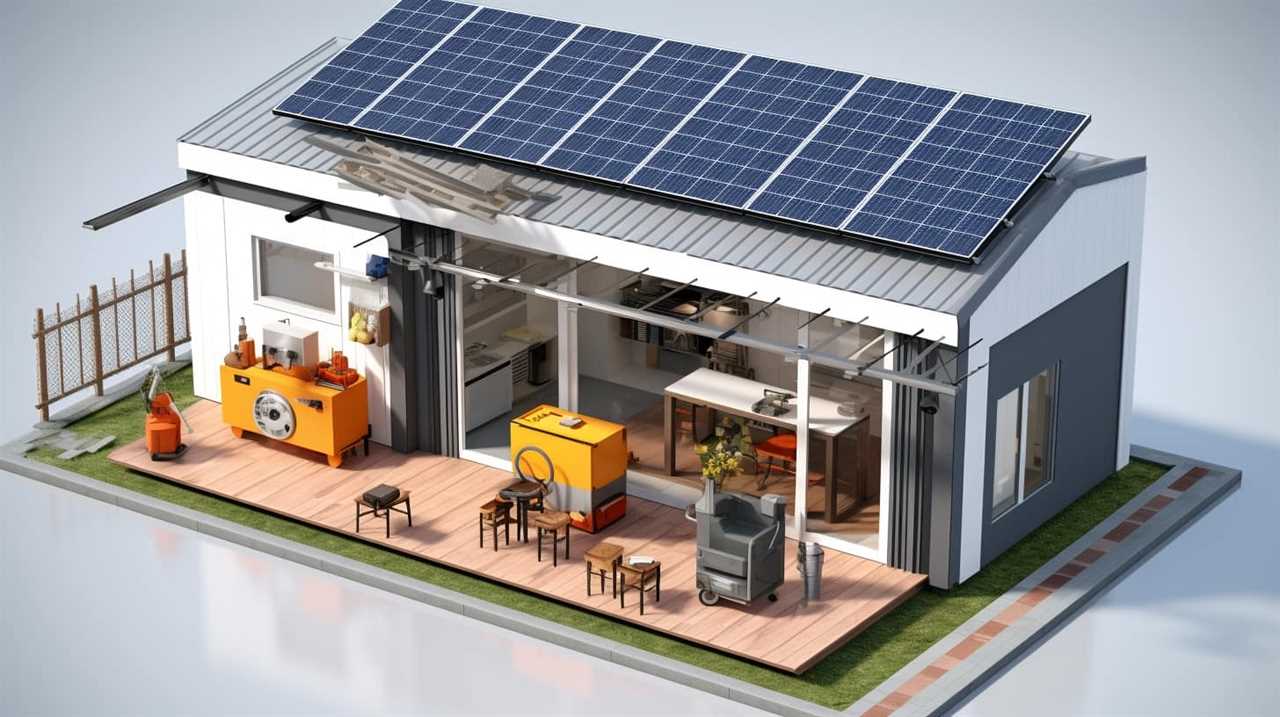
Aphids are small, pear-shaped insects that cluster on new leaves and buds.
Mealybugs are covered in a white, waxy substance and can be found on the undersides of leaves and in leaf axils.
Whiteflies, as the name suggests, are tiny white insects that fly around when disturbed.
An infestation of these tiny white bugs can cause significant damage to your house plants. Signs of infestation include yellowing leaves, stunted growth, distorted foliage, and a sticky residue called honeydew on the leaves. Furthermore, these pests can transmit plant diseases, weaken the plant’s immune system, and attract other pests.
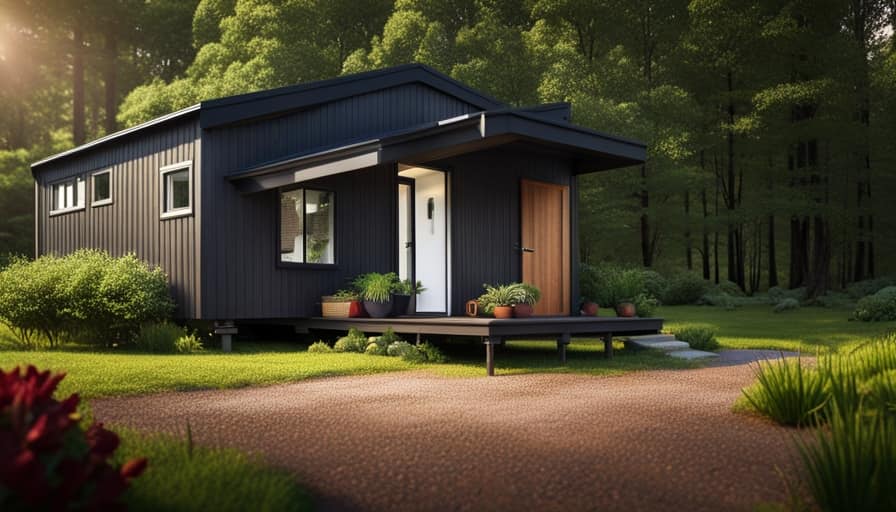
Understanding the causes of infestation is crucial in effectively getting rid of these tiny white bugs on your house plants.
Understanding the Causes of Infestation
Understanding the causes of infestation is essential in effectively eliminating these tiny white bugs on my house plants. Here are a few key factors to consider:
- Lack of proper plant care: Neglecting to provide adequate water, sunlight, and nutrients can weaken plants, making them more susceptible to bug infestations.
- Overwatering: Excessive moisture can create a favorable environment for pests like aphids and mealybugs.
- Bringing infested plants indoors: Introducing plants from outside without proper inspection can bring unwanted bugs into your home.
Recognizing the signs of bug damage is crucial for preventing infestation. Look out for yellowing, wilting leaves, sticky residue on leaves and stems, and tiny white bugs crawling on the plant’s surface.
Now that we understand the causes of infestation, let’s explore natural remedies to eliminate these pesky bugs.
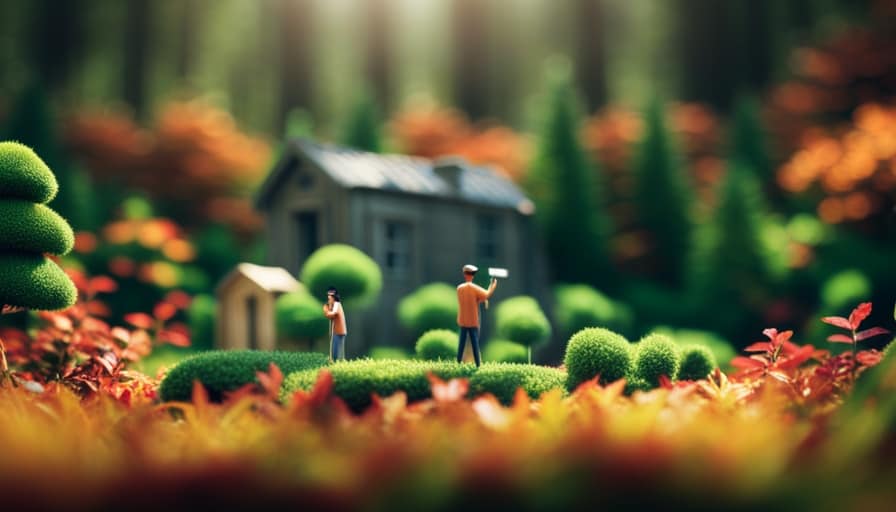
Natural Remedies to Eliminate the Bugs
To effectively get rid of these tiny white bugs on my house plants, I’ll need to rely on natural remedies that can eliminate them without harming the plants.
One effective option is to create homemade insecticides using ingredients readily available in your kitchen. You can mix a solution of water and dish soap, or water and neem oil, and spray it directly on the affected plants. These solutions work by suffocating the pests and disrupting their feeding patterns.
Another natural approach is to introduce insect-repelling plants into your garden. Plants like lavender, mint, and marigold emit fragrances that repel insects, keeping them away from your precious plants.
Chemical Solutions for a Lasting Bug-Free Environment
One effective chemical solution for achieving a bug-free environment is using a professional-grade insecticide spray. These sprays are specifically formulated to target and eliminate pests, including tiny white bugs on house plants. When using a professional-grade insecticide spray, it’s important to follow the instructions provided by the manufacturer to ensure safe and effective use.
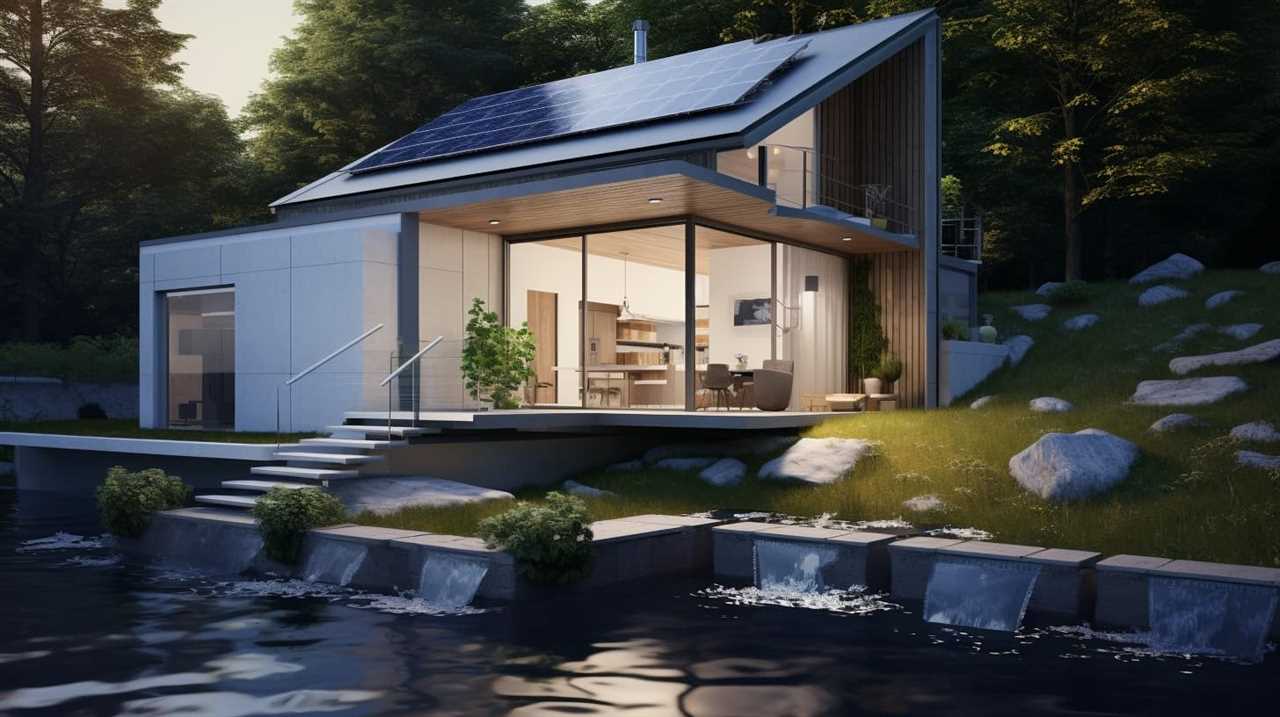
Additionally, consider these non-toxic alternatives to chemical solutions for pest control:
-
Neem oil: Derived from the neem tree, neem oil is a natural insecticide that can be effective against a wide range of pests. It works by disrupting the insect’s life cycle and repelling them from plants.
-
Insecticidal soap: Made from potassium salts of fatty acids, insecticidal soap works by suffocating pests on contact. It’s safe to use on most plants and can be an effective solution against white bugs.
-
Diatomaceous earth: This powdery substance is made from fossilized remains of diatoms and acts as a desiccant, drying out and killing insects.

When using any chemical solution or non-toxic alternative, it’s essential to monitor the plants closely and repeat the treatment as necessary to maintain a bug-free environment. Professional pest control services can also provide expert guidance and assistance in achieving long-lasting results.
Preventing Future Infestations and Maintaining Healthy House Plants
To effectively prevent future infestations and maintain healthy house plants, I will implement a regular cleaning and inspection routine. This will help ensure that any signs of pests or diseases are detected early on and addressed promptly. Regularly cleaning the leaves and stems of my plants with a mild soap and water solution will help remove any dust or debris that can attract pests. Additionally, I will inspect the plants for any signs of infestation, such as white bugs or sticky residue on the leaves. To further enhance plant hygiene, I will also consider using beneficial insects, such as ladybugs or lacewings, which feed on common plant pests like aphids. By incorporating these practices into my routine, I can maintain healthy house plants and prevent future infestations.
| Regular Cleaning | Inspection Routine | Using Beneficial Insects |
| Remove dust and debris | Check for signs of infestation | Introduce ladybugs or lacewings to control pests |
| Promotes plant hygiene | Detect and address issues early | Natural pest control method |
| Prevents pest attraction | Maintain healthy house plants | Encourages ecosystem balance |
Frequently Asked Questions
Can These Tiny White Bugs Harm Humans?
Yes, tiny white bugs on house plants can harm humans. They can cause skin irritations and allergic reactions. It’s important to take steps to prevent infestations, such as regularly inspecting and cleaning your plants.
How Long Does It Take for Natural Remedies to Eliminate the Bugs Completely?
To completely eliminate the tiny white bugs using natural remedies, it typically takes a few weeks of consistent application. However, the effectiveness of these remedies can vary. It’s important to avoid common mistakes like under-applying or using incorrect remedies.
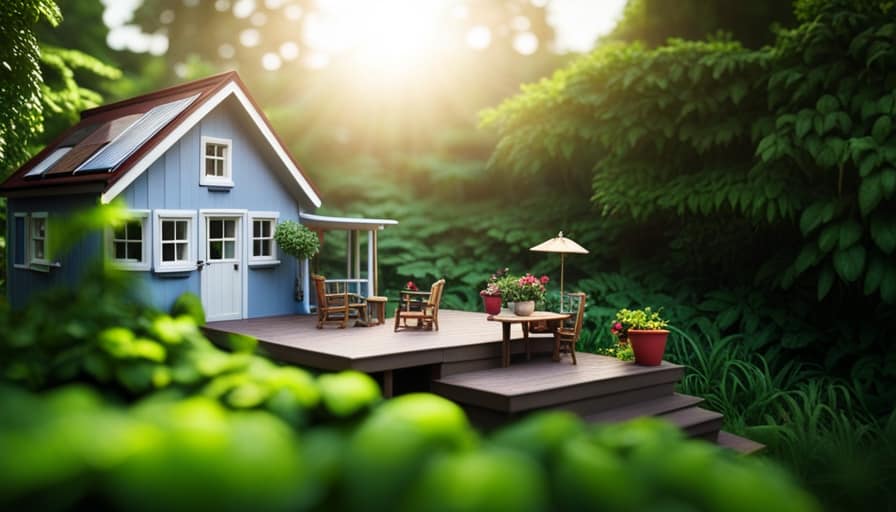
Are There Any Specific Types of House Plants That Are More Prone to Infestations?
Certain house plants, like lavender and marigolds, have natural repellent properties that can help prevent infestations. It’s important to choose plants that are known to repel bugs and to regularly inspect and clean your plants to avoid any potential infestations.
Can These Bugs Spread From One House Plant to Another?
Oh, the joy of tiny white bugs on house plants! Yes, these pests can spread from one plant to another. To control them, use insecticides and watch out for signs of infestation like sticky residue or wilting leaves.
How Often Should I Check My House Plants for Signs of Infestation?
I check my house plants for signs of infestation regularly to ensure their health. Common signs include tiny white bugs and yellowing leaves. Preventative measures like proper watering and cleaning can help keep plants bug-free.
Conclusion
In conclusion, taking care of our house plants goes beyond watering and sunlight. Identifying and eliminating tiny white bugs is a crucial part of maintaining a healthy environment for our plants.
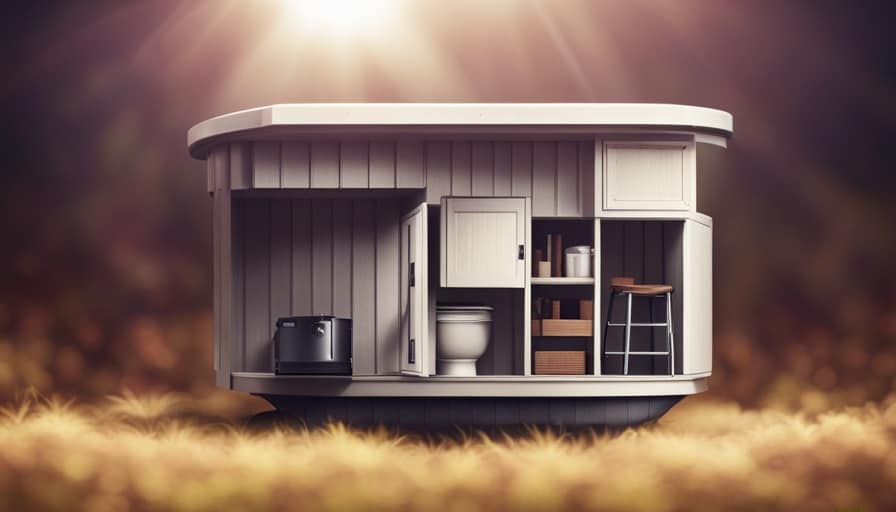
By understanding the causes of infestation and using natural or chemical remedies, we can ensure a bug-free environment. Remember, prevention is key, so regularly inspect your plants and take necessary measures to keep them thriving.
Happy gardening!
I’m Theodore, and I love tiny houses. In fact, I’m the author of Tiny House 43, a book about tiny houses that are also tree houses. I think they’re magical places where imaginations can run wild and adventures are just waiting to happen.
While tree houses are often associated with childhood, they can be the perfect adult retreat. They offer a cozy space to relax and unwind, surrounded by nature. And since they’re typically built on stilts or raised platforms, they offer stunning views that traditional homes simply can’t match.
If you’re looking for a unique and romantic getaway, a tree house tiny house might just be the perfect option.
Beginners Guides
How Do I Get Rid of Tiny Moths in My House

I have experienced the frustration of dealing with tiny moths flying around my food in the kitchen. But do not worry, I have a solution for you.
In this article, I’ll show you how to banish those pesky moths from your house for good. We’ll dive into identifying different moth species, understanding what attracts them, and simple prevention techniques you can implement.
Plus, I’ll share some natural remedies and professional options as a last resort. Say goodbye to those unwanted guests!
Key Takeaways
- Identifying the specific moth species is crucial for implementing targeted control measures.
- Moths are attracted to food sources, fabrics, and organic materials, so it’s important to store food in airtight containers and keep the house clean.
- Moths prefer dark, undisturbed areas to lay their eggs, so sealing cracks and openings in walls, windows, and doors can help prevent infestation.
- If natural remedies and DIY methods fail, it is advisable to seek professional pest control services for thorough inspection and tailored treatment plans.
Identifying the Culprits: What Type of Moth Is Invading Your Home
I can’t figure out what kind of moth is infesting my home. It’s frustrating not knowing the exact species, as different moths have different behaviors and habits. Identifying the culprits is crucial in order to effectively address the problem.
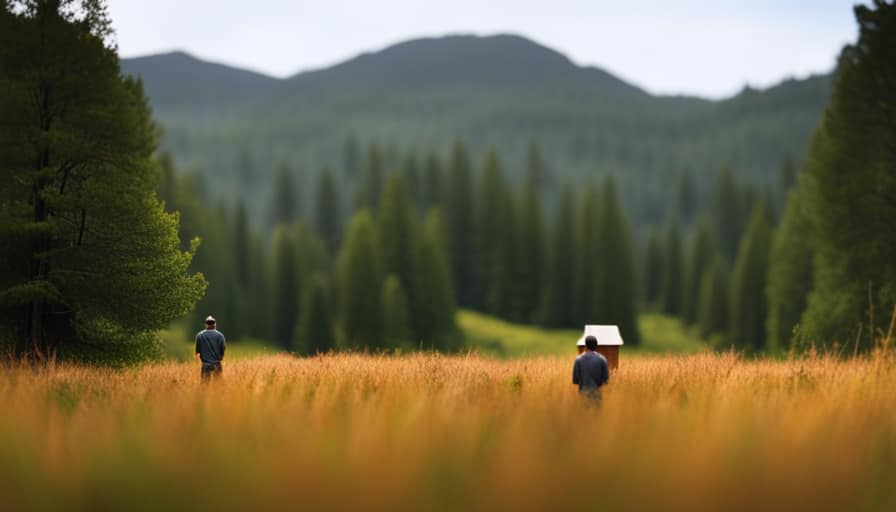
There are several common moth species that are known to invade homes, such as the Indian mealmoth, clothes moth, and pantry moth. Each species has distinct characteristics that can help with identification. Understanding their behavior is also important as it can give insights into their lifecycle and potential sources of infestation.
Moths are attracted to food sources, fabrics, and other organic materials. They can lay eggs in stored grains, textiles, or even pet food. By understanding the specific species and their behavior, it becomes easier to implement targeted control measures and prevent further infestations.
Understanding the Infestation: Why Are Moths Attracted to Your House
To effectively address the infestation, it’s essential to understand why moths are attracted to your house. Here are four reasons why moths may be flocking to your home:
-
Food sources: Moths are attracted to food, especially grains, cereals, and dried fruits. They can easily find their way into your pantry and feast on these items.
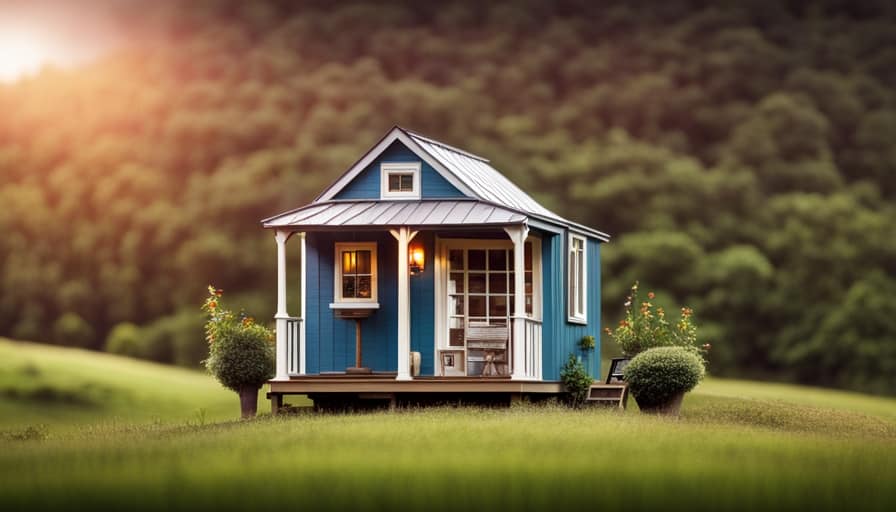
-
Moisture and humidity: Moths thrive in damp environments, making your house an ideal breeding ground if there are areas with high humidity or water leaks.
-
Suitable habitat: Moths are drawn to dark, undisturbed areas where they can lay their eggs undisturbed. This includes closets, attics, and basements.
-
Outdoor attraction: Moths can be attracted to your house from the outside, especially if you have outdoor lights that are left on at night.
Understanding moth behavior and their attraction to your house is crucial in preventing further infestation. By addressing these factors, you can take steps to keep moths at bay and protect your home.

Here are some moth prevention tips:
- Store food in airtight containers.
- Keep your house clean and free of crumbs or spills.
- Fix any leaks or moisture issues promptly.
- Use moth repellents or traps in vulnerable areas.
Prevention Is Key: Simple Steps to Keep Moths From Entering Your Home
Prevention is essential, so I’ll share some simple steps to keep moths from entering your home. By taking a proactive approach, you can create an inhospitable environment for moths and minimize the risk of infestations. One effective method is to use moth repellent products, such as sachets or sprays, in areas where moths are commonly found. These repellents contain chemicals that deter moths from entering your home. Additionally, it is crucial to seal any cracks or openings in your walls, windows, and doors. Moths can easily slip through these tiny gaps, so using caulk or weatherstripping can help keep them out. Regularly vacuuming and cleaning your home can also eliminate moth eggs or larvae that may be hiding in carpets or corners. By implementing these preventive measures, you can ensure a moth-free home environment.
| Steps to Keep Moths Away | |
|---|---|
| Use moth repellent products | Seal cracks and openings |
| Regularly vacuum and clean |
Natural Remedies: Non-Toxic Solutions to Get Rid of Moths
One effective way to get rid of moths naturally is by using a combination of vinegar and water to create a non-toxic moth spray. Here are some natural remedies you can try:
-
Vinegar and water spray: Mix equal parts vinegar and water in a spray bottle. Spray this solution on areas where moths are present, such as closets, drawers, and pantry shelves. The strong odor of vinegar repels moths and prevents them from laying eggs.
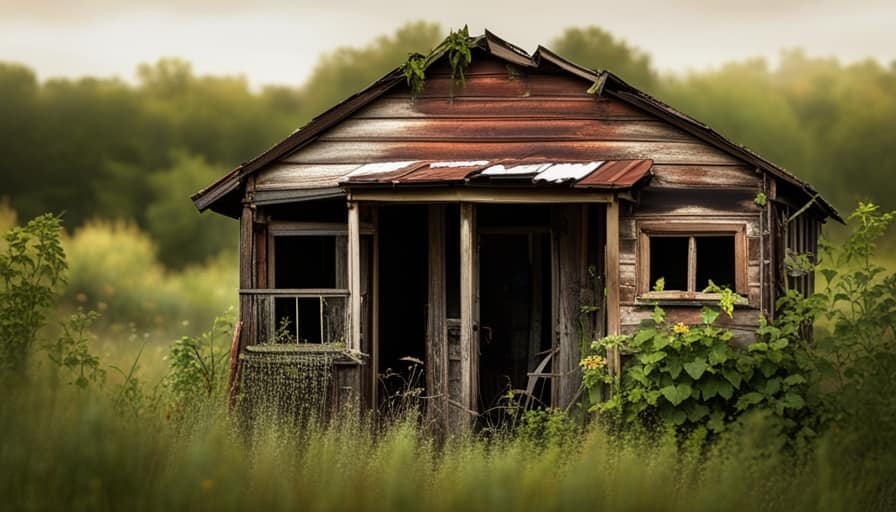
-
Cedar chips: Moths dislike the smell of cedar, so placing cedar chips in your closets and drawers can help deter them. You can also use cedar oil or cedar sachets for the same effect.
-
Homemade traps: Create simple moth traps by placing a mixture of vinegar, sugar, and dish soap in a bowl. The sweet scent attracts moths, and the dish soap traps them when they try to land on the mixture.
-
Lavender sachets: Moths are repelled by the fragrance of lavender. Place dried lavender in small sachets and tuck them in your clothing drawers or hang them in your closets.
These natural repellents and homemade traps can help you get rid of moths without using toxic chemicals. However, if these methods fail to eliminate the infestation, it may be time to consider professional pest control options.
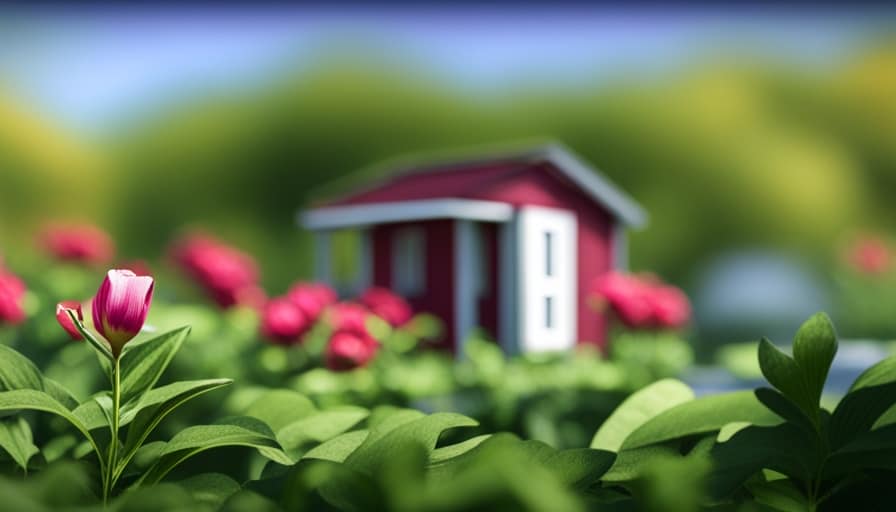
Last Resort: When All Else Fails, Professional Pest Control Options
If I’ve exhausted all other options, I’ll contact a professional pest control service to eliminate the moth infestation in my house. While natural remedies and DIY methods can be effective for small infestations, sometimes the problem persists or worsens despite our best efforts.
This is when it’s crucial to call in the experts. Professional pest control services have the knowledge, experience, and resources to effectively eradicate moth infestations. They’ll conduct a thorough inspection of your home to identify the source of the infestation and develop a tailored treatment plan.
The benefits of hiring professionals include their expertise in identifying different moth species, their access to specialized equipment and pesticides, and their ability to ensure the complete eradication of the infestation.
When all else fails, it’s best to rely on the expertise of professional pest control services to rid your home of those persistent moths.

Frequently Asked Questions
Can Moths Cause Any Damage to My House or Belongings?
Moths can cause damage to fabrics, carpets, and stored food. It’s important to address a moth infestation promptly. Using natural moth repellents, like lavender or cedar, can help deter them from your house and protect your belongings.
Are All Types of Moths Attracted to Homes, or Are There Specific Species That Are More Common?
In the world of moths, certain species have a penchant for our cozy homes. Understanding the types commonly found indoors can help us prevent the dreaded infestations from taking hold in the first place.
How Long Does It Usually Take to Get Rid of a Moth Infestation Using Natural Remedies?
Using natural remedies to get rid of a moth infestation can be effective, but the time it takes varies depending on the severity. Common signs of an infestation include sightings of adult moths and larvae, as well as damaged fabrics or food products.
Can Moths Carry Diseases or Pose a Health Risk to Humans?
Moths can transmit diseases to humans, so it’s important to take precautions. Individuals with allergies or asthma may experience respiratory issues due to moth infestations in homes.
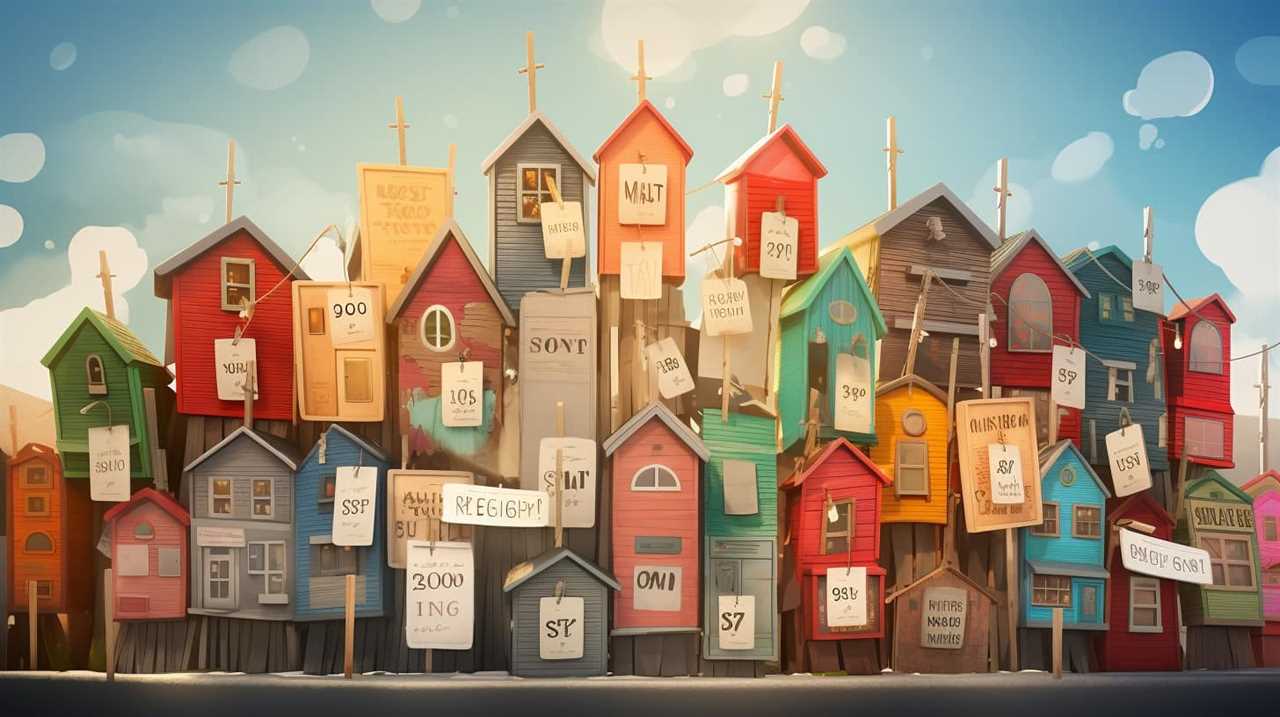
Are There Any Specific Plants or Herbs That Repel Moths and Can Be Used as Natural Remedies?
Using natural moth repellents, such as specific plants and herbs, offers several benefits over chemical alternatives. Creating a moth repelling garden with lavender, rosemary, and mint can effectively deter moths from your house.
Conclusion
In conclusion, it’s essential to address the presence of these minuscule pests in your home promptly. By identifying the specific type of moth invading your space and understanding their attraction, you can take preventive measures to keep them at bay.
Utilizing natural remedies and seeking professional pest control services as a last resort will ensure a moth-free environment without compromising your household’s well-being.
Stay vigilant and employ these effective methods to bid farewell to these unwelcome visitors.
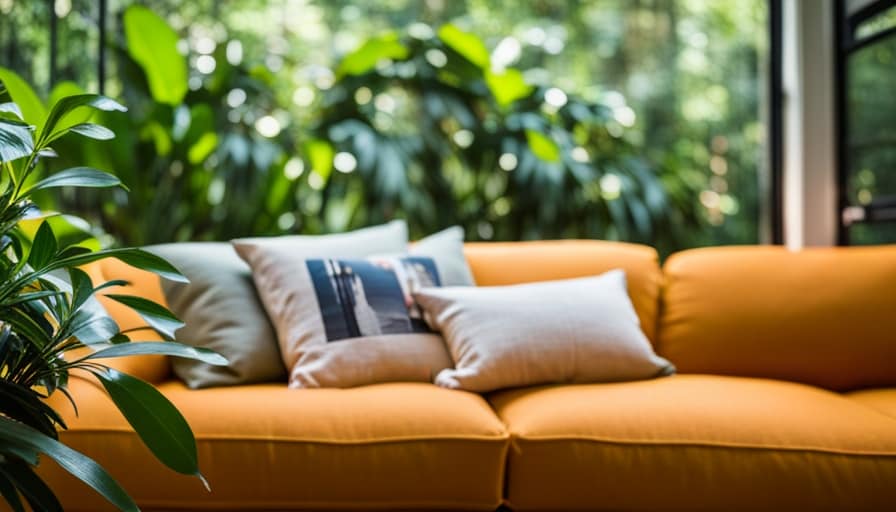
I’m Theodore, and I love tiny houses. In fact, I’m the author of Tiny House 43, a book about tiny houses that are also tree houses. I think they’re magical places where imaginations can run wild and adventures are just waiting to happen.
While tree houses are often associated with childhood, they can be the perfect adult retreat. They offer a cozy space to relax and unwind, surrounded by nature. And since they’re typically built on stilts or raised platforms, they offer stunning views that traditional homes simply can’t match.
If you’re looking for a unique and romantic getaway, a tree house tiny house might just be the perfect option.
Beginners Guides
How Difficult Is It to Build a Tiny House in Colorado Springs

I understand your concerns about building a tiny house in Colorado Springs. However, I can assure you that with the proper knowledge and guidance, it is completely achievable.
In this article, I’ll walk you through the zoning regulations, permitting process, finding suitable land, and navigating building codes. We’ll also discuss securing financing, budgeting, and dealing with utilities.
So, if you’re ready to embark on this rewarding journey, let’s dive in and make your tiny house dreams a reality.
Key Takeaways
- Zoning regulations and building permits are required for constructing a tiny house in Colorado Springs.
- Finding suitable land that complies with zoning regulations is important for placing a tiny house.
- Familiarizing oneself with local building codes and regulations, and following safety guidelines is necessary.
- Researching various financing options and presenting a detailed budget can increase the chances of securing financing for building a tiny house.
Zoning Regulations and Permitting Process
I’ll need to research the zoning regulations and permitting process before starting to build my tiny house in Colorado Springs. Understanding these regulations is crucial as they dictate where and how I can construct my tiny house.
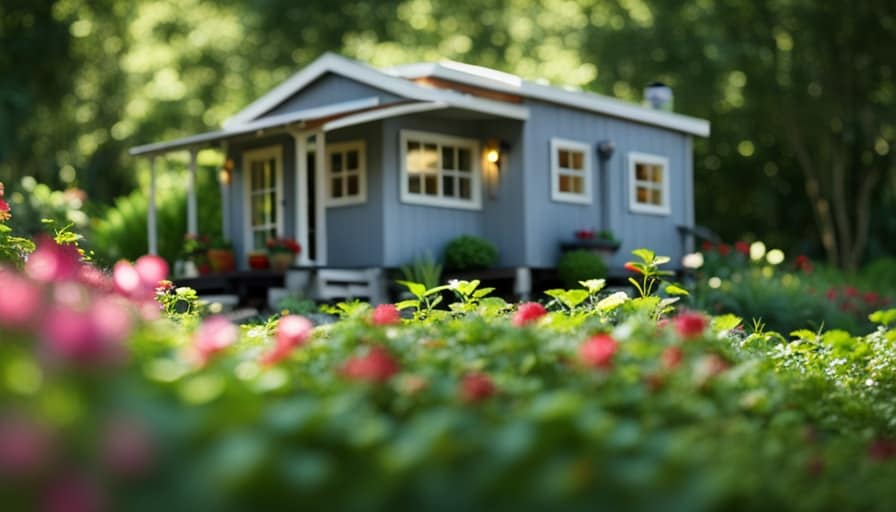
One key aspect to consider is the impact of tiny houses on property values. While some argue that they can decrease property values, others believe that they can actually increase them by adding diversity and uniqueness to the community.
Additionally, one of the challenges I may face is finding legal parking for my tiny house in urban areas. Many cities have restrictions on where tiny houses can be parked, making it essential to find suitable parking options that comply with local regulations.
With these factors in mind, I can now move on to finding suitable land for my tiny house.
Finding Suitable Land for Your Tiny House
After researching the zoning regulations and permitting process, it’s now time to start finding suitable land for my tiny house in Colorado Springs.
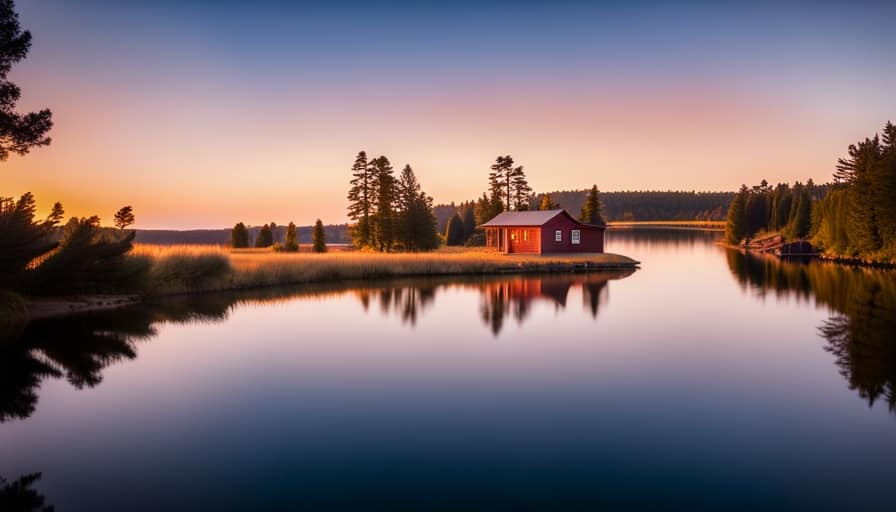
When it comes to finding land for a tiny house, there are a few important factors to consider. One of the major challenges is land availability constraints. Due to the increasing popularity of tiny houses, finding land that allows for their construction can be difficult. It’s important to do thorough research and explore different options, such as contacting local real estate agents or checking online platforms that specialize in tiny house-friendly land.
Additionally, environmental impact considerations are crucial. It’s important to choose a location that minimizes the impact on the surrounding environment and aligns with sustainable practices.
Taking these factors into account will ensure that I find a suitable piece of land for my tiny house in Colorado Springs.
Navigating Building Codes and Inspections
When it comes to navigating building codes and inspections for my tiny house in Colorado Springs, I’ll need to familiarize myself with the local regulations and ensure compliance throughout the construction process. Understanding local regulations is crucial to avoid any legal issues and ensure that my tiny house meets all the necessary requirements.
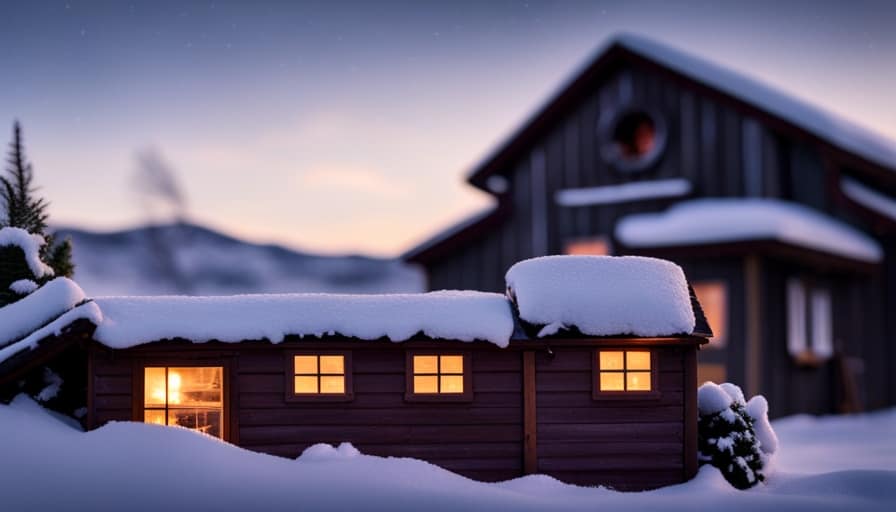
This includes obtaining proper permits, adhering to zoning laws, and following safety guidelines. To ensure a smooth process, I may consider hiring a professional builder who’s well-versed in local building codes and has experience with tiny house construction. Their expertise and knowledge will help me navigate the intricacies of the regulations and ensure that my tiny house is built according to the highest standards.
By understanding the local regulations and working with a professional builder, I can confidently proceed with my project while complying with all necessary codes and inspections.
With the building codes and inspections in mind, the next step is to secure financing and budget for my tiny house project.
Securing Financing and Budgeting for Your Project
To successfully secure financing and budget for my tiny house project in Colorado Springs, I frequently need to research various lenders and explore different funding options. Securing loans for a tiny house can be challenging, as it’s a unique type of project and not all lenders may be familiar with it. However, there are lenders who specialize in providing loans specifically for tiny houses.
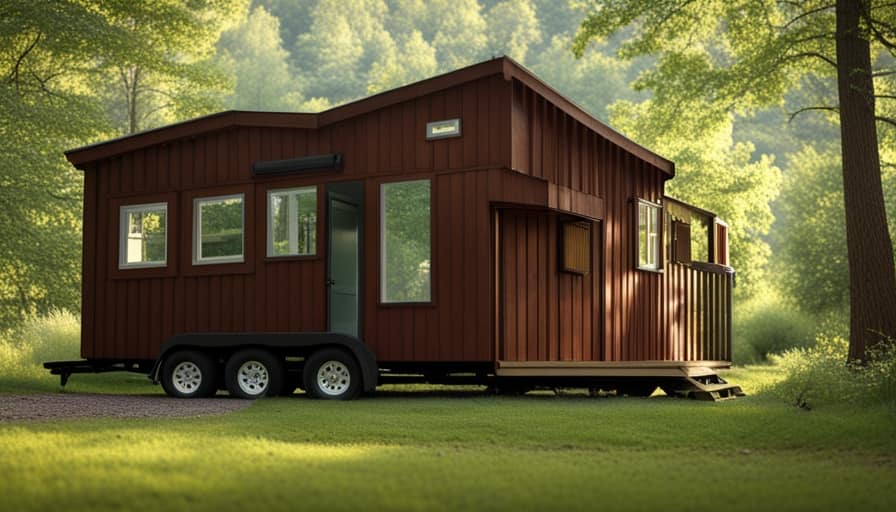
It’s important to gather all the necessary documents and information required by the lenders, such as the cost estimation of the project, including materials, labor, and any additional expenses. By presenting a thorough and well-prepared budget, it increases the chances of securing financing for the project.
Once the financing is secured, it becomes easier to move forward with the next steps of the project, such as dealing with utilities and exploring off-grid options.
Dealing With Utilities and Off-Grid Options
I can explore both traditional utility options and off-grid alternatives when dealing with electricity, water, and sewage in my tiny house in Colorado Springs.
When it comes to off-grid power, there are several options available. Solar panels are a popular choice, harnessing the energy of the sun to generate electricity. Wind turbines can also be used to generate power, particularly in areas with consistent wind patterns. Additionally, hydroelectric power can be harnessed if there’s a suitable water source nearby.
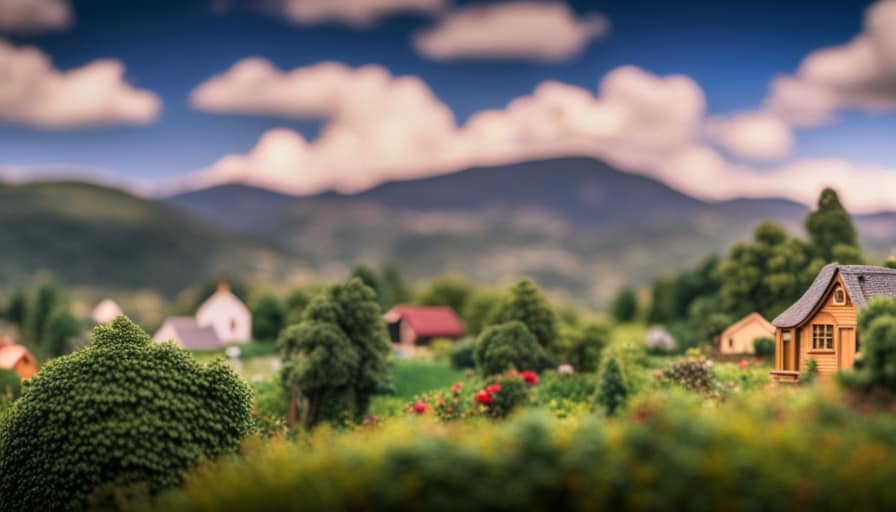
As for water sources, rainwater collection systems can be installed to capture and store rainwater for household use. Digging a well is another option, although it may require permits and additional expenses.
Lastly, composting toilets can be used to manage sewage in an off-grid tiny house, eliminating the need for traditional plumbing systems.
Frequently Asked Questions
What Are the Advantages of Building a Tiny House in Colorado Springs Compared to Other Cities in Colorado?
Building a tiny house in Colorado Springs has many advantages compared to other cities in Colorado. The city has a thriving tiny house community, supportive regulations, and an abundance of natural beauty to enjoy.
Are There Any Specific Design Requirements for Tiny Houses in Colorado Springs?
There are specific design requirements for tiny houses in Colorado Springs, including building regulations that must be followed. It is important to be knowledgeable about these requirements to ensure a successful and compliant build.

How Long Does the Zoning and Permitting Process Usually Take in Colorado Springs?
The zoning and permitting process in Colorado Springs can be a challenge. It takes time to navigate through the requirements and obtain the necessary approvals. However, with proper guidance and patience, it is possible to build a tiny house in Colorado Springs.
Are There Any Restrictions on Living in a Tiny House on Wheels in Colorado Springs?
Living in a tiny house on wheels in Colorado Springs comes with restrictions. Tiny house parking options are limited, and building codes for tiny houses must be followed. It can be challenging, but not impossible.
Can I Rent Out My Tiny House as an Airbnb in Colorado Springs?
Renting out a tiny house as an Airbnb in Colorado Springs is possible, but there are regulations to follow. It’s important to familiarize yourself with local zoning laws and obtain any necessary permits before listing your tiny house as a rental property.
Conclusion
Building a tiny house in Colorado Springs may be challenging due to zoning regulations, finding suitable land, navigating building codes, securing financing, and dealing with utilities.

However, with determination and thorough research, it’s possible to overcome these obstacles.
For example, Sarah, a Colorado Springs resident, successfully built her own off-grid tiny house by carefully selecting land outside city limits, obtaining the necessary permits, and utilizing solar power.
Her experience demonstrates that with proper planning and knowledge, building a tiny house in Colorado Springs can be a rewarding and sustainable endeavor.
I’m Theodore, and I love tiny houses. In fact, I’m the author of Tiny House 43, a book about tiny houses that are also tree houses. I think they’re magical places where imaginations can run wild and adventures are just waiting to happen.
While tree houses are often associated with childhood, they can be the perfect adult retreat. They offer a cozy space to relax and unwind, surrounded by nature. And since they’re typically built on stilts or raised platforms, they offer stunning views that traditional homes simply can’t match.
If you’re looking for a unique and romantic getaway, a tree house tiny house might just be the perfect option.
-

 Beginners Guides2 weeks ago
Beginners Guides2 weeks agoHow To Buy A Tesla Tiny House
-

 Energy Efficiency2 months ago
Energy Efficiency2 months agoBest Tiny Homes For Cold Climates
-

 Beginners Guides1 week ago
Beginners Guides1 week agoTiny House Nation Where Are They Now Stephanie
-

 Tiny House Resources (e.g., legalities, cost, insurance, FAQs)2 months ago
Tiny House Resources (e.g., legalities, cost, insurance, FAQs)2 months agoDo Tiny Homes Need Planning Permission?
-

 Beginners Guides3 weeks ago
Beginners Guides3 weeks agoFrom The Show Tiny House Nation How Many Keep Their Tiny House?
-

 Beginners Guides2 months ago
Beginners Guides2 months agoUsing a Climbing Net For Treehouse Construction
-

 Beginners Guides2 months ago
Beginners Guides2 months agoHow to Build a Treehouse Without Drilling Into the Tree
-
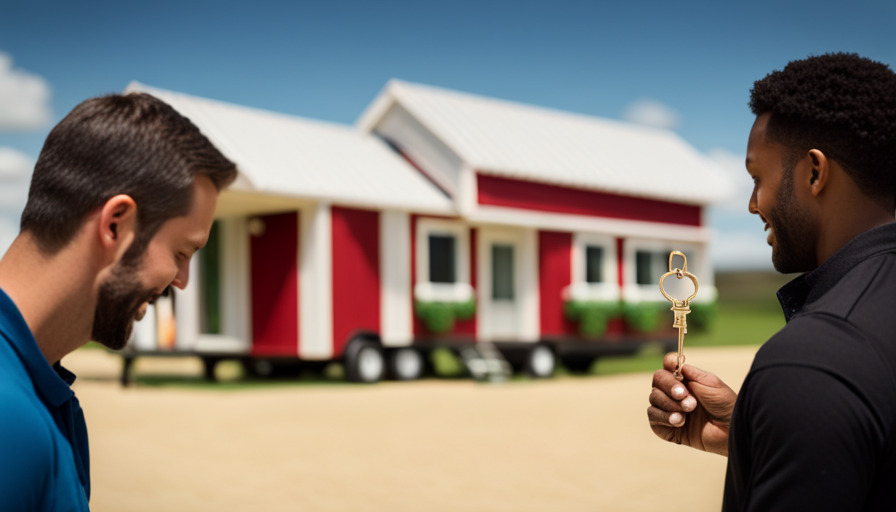
 Beginners Guides3 weeks ago
Beginners Guides3 weeks agoTiny House Nation Who Pays For The Houses








